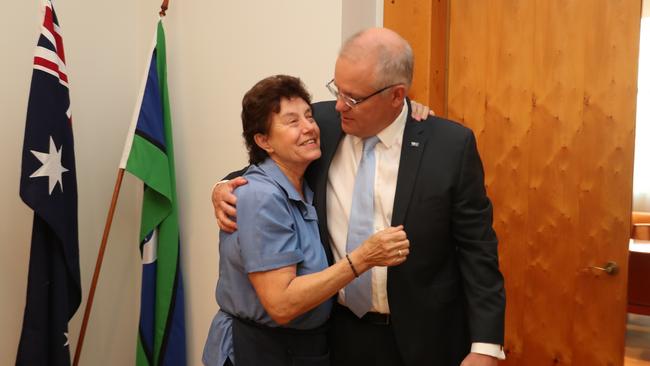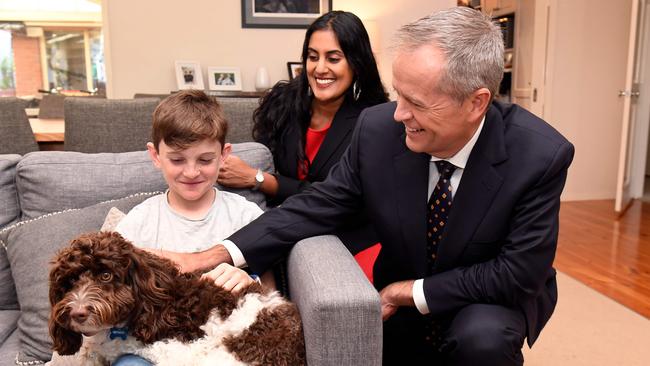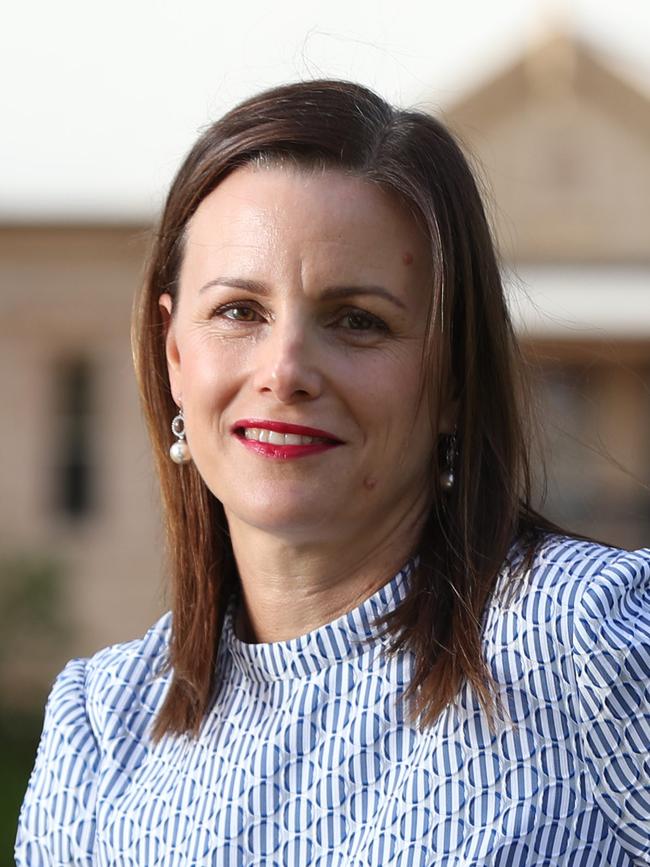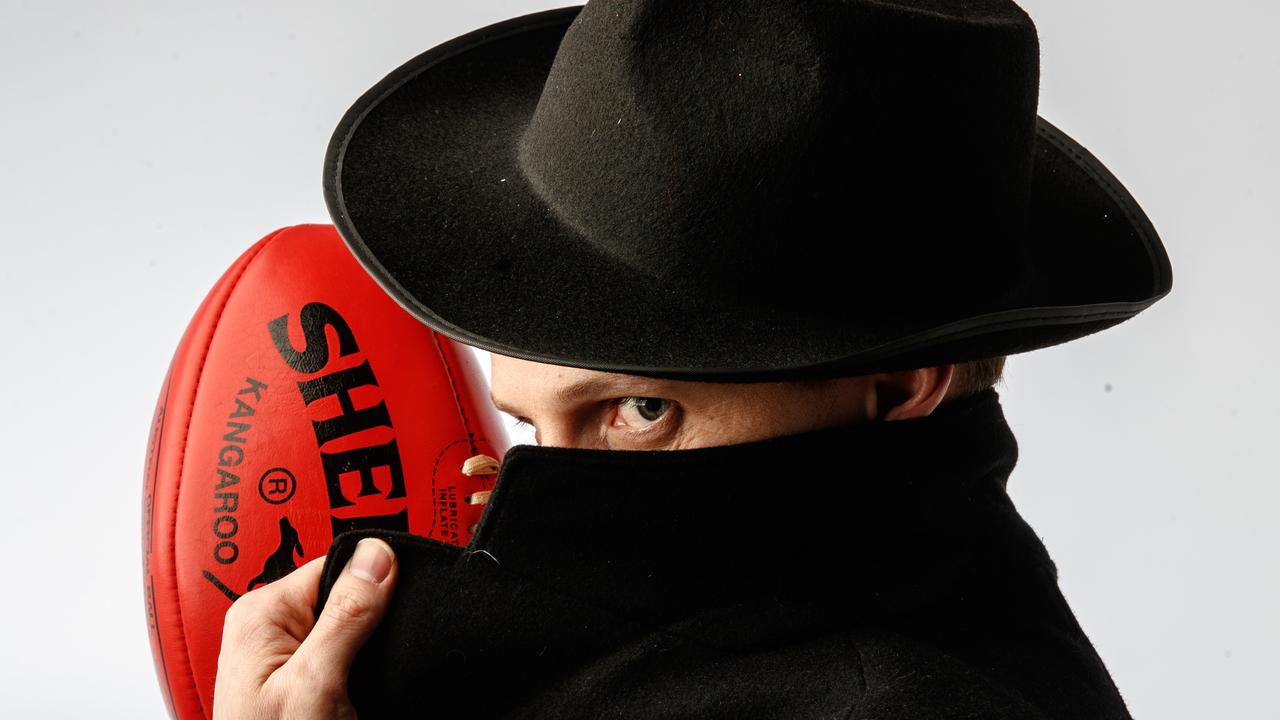Federal Election 2019: Major parties trade barbs over tax
The major parties have squared off on tax on the first day of the federal election campaign, with claims that the burden of new Labor taxes has almost doubled to $387 billion over the next 10 years.
News
Don't miss out on the headlines from News. Followed categories will be added to My News.
- The 15 SA issues that will matter on election day
- Fraser Anning selects SA candidates amid protests
- Analysis: Big parties will ignore SA at their peril
- Experts tip who will win and who will fall
- Opinion: Get ready for dark arts, attacks ads and lies
READ BELOW: The must-watch battles in SA
The major parties have squared off on tax on the first day of the federal election campaign, with claims that the burden of new Labor taxes has almost doubled to $387 billion over the next 10 years.
Labor said it would use the revenue “from the top end of town” to pay for schools and hospitals.
With the economy and tax shaping as key themes for the May 18 poll, the two parties immediately traded barbs.
THE BIG SA SEATS TO WATCH
Treasurer Josh Frydenberg released costings showing taxpayers would be hit by $387 billion of taxes over 10 years — almost double previous estimates of $200 billion.
“Whatever Labor promises is funded on the back of $387 billion of new taxes on your income, your house, your savings and your super,” he said.
Opposition Treasury spokesman Chris Bowen publicly derided the figures as “dodgy” and said Labor planned to reverse the Liberals’ cuts to schools and hospitals and deliver the biggest cancer care package in Australian history.
“We’re paying for it by making multinationals pay their fair share and closing tax loopholes for the top end of town,” he said.
But Labor’s tax revenue looks set to take a $5 billion-a- year hit if it is elected. Centre Alliance, which is set to play a key crossbench role in the Senate, has revealed the party would not support Labor’s franking credit and negative- gearing policies.
“We will protect those retirees that rely on franking credits,” Centre Alliance Senator Rex Patrick said of the franking credits policy. He said the party would also look at placing a cap on negative-gearing policy.

Meanwhile, the election is shaping as a major intergenerational battle between a record number of first-time “Generation Z” voters, with markedly different views than their conservative, older parents and grandparents. Issues such as climate change, refugees, overpopulation and industrial relations will expose deep fault-lines between the generations, election experts say.
And while a bumper crop of new voters will vote this year, the country’s growing ranks of baby boomers means older Australians remain a potent electoral force.
Roy Morgan Research chief executive Michele Levine said younger voters were far more likely to nominate climate change and education as concerns, while older people were more focused on cutting crime, managing immigration and demanding “open and honest government”.
Prime Minister Scott Morrison and Opposition Leader Bill Shorten on Thursday outlined their strategies for the next five weeks.
Mr Morrison made no mention of climate change as he addressed the media, instead focusing on the economy and his direct opponent.

“You vote for me, you’ll get me. You vote for Bill Shorten and you’ll get Bill Shorten,” he said, in a blatant shot at the Labor leader’s lack of popularity in opinion polls.
However, climate change and renewable energy were the key issues Mr Shorten mentioned after jobs, better health and education.
For Mr Morrison, it is all about who can best manage the economy, which is particularly significant as growth slows. Mr Shorten, who is widely predicted to be the nation’s next Prime Minister, will also focus his campaign on offering a “fair go” for all, with bigger tax concessions for battlers and a concerted push for wages growth.
After an early-morning drive to see Governor-General Sir Peter Cosgrove at Government House, Mr Morrison said the election would be “a choice between the Government that is delivering a strong economy and will continue to do so, or Bill Shorten’s Labor Party, whose policies would weaken our economy”.
In South Australia, the election campaign is expected to be focused on traditional issues of jobs, health care and education. But debates about managing the Murray-Darling Basin, oil exploration in the Great Australian Bight, infrastructure spending, population growth and the workforce for emerging industries, including defence and space, also will dominate local discussion.
Opposition employment and workplace relations spokesman Brendan O’Connor joined Labor’s candidate for Boothby, Nadia Clancy, to discuss plans to crack down on sham contracting.
THE MUST WATCH BATTLES IN SA
By Claire Bickers
Christopher Pyne’s former seat of Sturt will be the “must-watch” battle in South Australia after the Liberal heavyweight called time on his 26-year political career.
Boothby will be the other key fight and election analysts are divided over whether Liberal Nicolle Flint can hold on.
If Ms Flint loses to Labor’s Nadia Clancy, Boothby will become part of a bigger story on election night about the shrinking number of women in the Liberals ranks.
Griffith University political expert Paul Williams told The Advertiser the seat would be “likely lost to Labor”, while veteran psephologist Malcolm Mackerras said the Liberal Party would retain Boothby.
Dr Williams also predicted Sturt would be “touch and go” for Mr Pyne’s successor, former political staffer James Stevens, on a 5.7 per cent margin.
“Sturt is right on the cusp of ‘fairly safe’ but, given the unpopularity of the Morrison Government and … the loss of Pyne’s personal vote, this is touch and go for the Liberals,” Dr Williams said.
“Given the decline in the Xenophon/Centre Alliance brand, I’m expecting many of those voters to return to Labor and bolster Labor’s primary vote considerably.
“The Libs will probably hang on but it will be close.”


Mr Stevens, formerly the chief of staff to Premier Steven Marshall, will be up against Labor’s candidate Cressida O’Hanlon, a former farmer turned dispute mediator.
“If Labor wins big then Sturt is a seat where it’s close,” election analyst Dr Kevin Bonham said.
“And with Pyne gone after so much time, it’s another one I think is a bit wobbly.” Mayo will be the other “must-see” battle in South Australia, with Centre Alliance candidate Rebekha Sharkie tipped to win, despite Liberal royalty Georgina Downer making a second attempt to regain it.
Ms Sharkie won the seat in 2016 as part of the Nick Xenophon Team against Liberal MP Jamie Briggs, who had quit the frontbench in December 2015 over an incident with a female public servant in Hong Kong.
The Liberals picked Ms Downer, daughter of Alexander Downer, who held Mayo for 24 years, to win the electorate back at last year’s by-election sparked by Ms Sharkie’s dual citizenship.
But Ms Sharkie won the seat, claiming 44.37 per cent of the primary vote, and gained a reputation as a strong local campaigner.
“The Liberals have little hope of picking this back up,” Dr Williams said.
“Labor is in with a chance, given its margin against the Libs has narrowed after redistribution, but Centre Alliance’s Sharkie should retain.”
Veteran psephologist Mr Mackerras, a visiting fellow at the Australian Catholic University, also tipped Ms Sharkie to win.
“I give Rebekha Sharkie a 75 per cent chance, with Georgina Downer on 25 per cent,” he told The Advertiser.
Labor has picked 23-year-old Saskia Gerhardy, an environmental campaigner, for its candidate in Mayo.
Barnaby Joyce, who resigned as deputy prime minister after revelations over his affair with former staffer Vikki Campion last year, is expected to hold on.
But Dr Williams said Mr Joyce would suffer “an enormous primary swing against him” and could be in serious trouble if a high-profile independent decided to challenge for New England.
Health Minister Greg Hunt and former Liberal Julia Banks are expected to be locked in one of the grittiest fights of the campaign in Flinders, where last year’s leadership spill to oust Malcolm Turnbull will be a key factor. Mr Mackerras also predicted some of the country’s most marginal seats — such as Capricornia and Dawson in Queensland, Banks in NSW and Boothby in South Australia — would stay in Coalition hands.
But Labor could pick up a number of safer Liberal seats like La Trobe in Victoria or Swan and Pearce in WA, he said.
A swing of 3 per cent was “quite likely”.
That could see Coalition held seats Forde, Gilmore, Flynn, Robertson, Petrie, Dickson, Hasluck, Page and Chisholm fall to Labor, according to the Mackerras Pendulum for the election.


